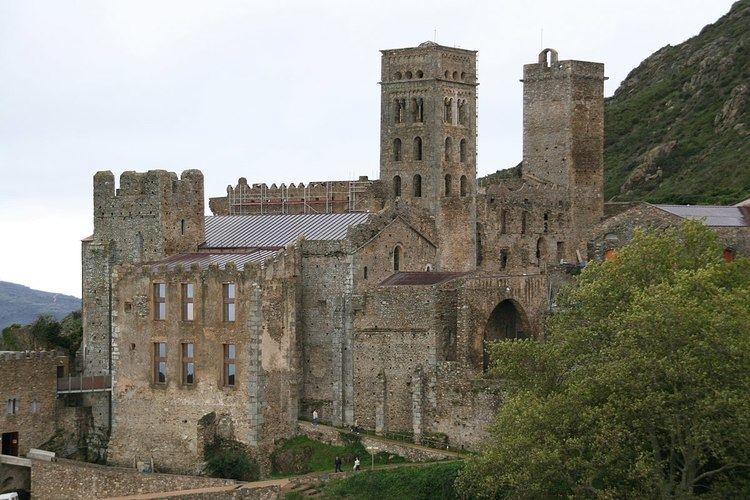Province Province of Girona | Phone +34 972 38 75 59 | |
 | ||
Similar Cap de Creus, Costa Brava, Verdera Castle, Dalí Theatre and Muse, Aquabrava | ||
Sant pere de rodes castle of sant salvador de verdera catalunya 2013 08 15 19h30
Sant Pere de Rodes ([ˈsan ˈpeɾə ðə ˈrɔðəs]) is a former Benedictine monastery in the comarca of Alt Empordà, in the North East of Catalonia, Spain.
Contents
- Sant pere de rodes castle of sant salvador de verdera catalunya 2013 08 15 19h30
- Location
- History
- Architecture
- References
Location
It is in the municipal area of El Port de la Selva in the province of Girona, Spain. It has been constructed in the side of the Verdera mountain below the ruins of the castle of Sant de Verdera that had provided protection for the monastery. It offers exceptional views over the bay of Llançà, to the north of Cap de Creus. Near the monastery Santa Creu de Rodes is the ruins of a medieval town, of which its pre-Romanesque-style church is the only remains dedicated to Saint Helena.
History
The true origin of the monastery is not known, which has given rise to speculation and legend; such as its foundation by monks who disembarked in the area with the remains of Saint Peter and other saints, to save them from the Barbarian hordes that invaded the Western Roman Empire. Once the danger had passed the Pope Boniface IV commanded them to construct a monastery.
The first documentation of the existence of the monastery dates 878, when it was mentioned as a simple monastery cell consecrated to Saint Peter, but it is not until 945 when an independent Benedictine monastery was founded, led by an abbot. Connected with the County of Empúries, it reached its maximum splendor between the 11th and 12th centuries until its final decay in the 17th century. Its increasing importance is reflected in its status as a point of pilgrimage.
In the 17th century it was sacked in several occasions and in 1793 was deserted by the benedictine community, which was transferred to Vila-sacred and finally settled in Figueres in 1809, until it was dissolved.
The monastery was declared a national monument in 1930. In 1935 the first restoration work was initiated.
Architecture
The buildings are constructed in terraces, given its location. Cloisters of 12th century form the central part of the complex. Around them the rest of constructions are distributed. The church, consecrated in the year 1022, is an example of Romanesque style; it has nave and two vaulted. These are bordered by a double column with capitals influenced by the Carolingian style. The double column support arches separating the nave from the aisles. Columns and pillars have been taken from a former Roman building. The nave ends with an arch leading to the apse, continued in the two aisles. Under the apse is a crypt. The church synthesizes a number of original styles including Carolingian, Romanesque and Roman. The monastery is considered one of the best examples of Romanesque architecture in Catalonia. In the western facade of the monastery is a 12th-century square-shaped bell tower, influenced by the Lombard style from the previous century. To the side is a defensive tower, that was probably began in the 10th century but finished later after several modifications.
